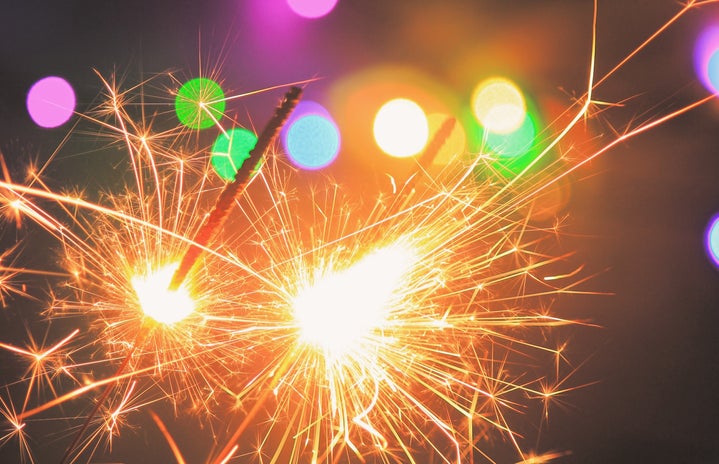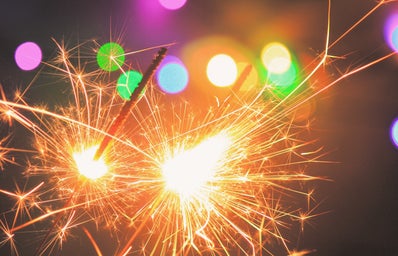Edited by: Kavya Mittal
You bunch up your saree in one hand while chuckling at a meme on Instagram that says Octobers, Novembers and Decembers are like the Fridays, Saturdays and Sundays of the year. You put up a cute story of the ethereal interiors of the Durga Pujo pandal and follow that up with a “Pujo dump 2021” comprising photos of you laughing ‘candidly.’ Ping! Someone comments “how so prettyyyyyy” and you feel like you’ve paisa vasool-ed this year’s festivities — you got to leave home and get some great pictures!
But something still feels quite missing. You don’t feel like you’re really enjoying. What comes as a result of a long, arduous lockdown or maybe just being a Gen-Z Indian is that you feel out of touch with festivals such as these. Maybe you’re an avid Pujo-goer who wants to rediscover and relate really hard to some things that are the holy grail of Durga Pujo. Maybe you’re someone who doesn’t know what exactly to do after hopping to the millionth pandal. Let this listicle be your bucket list to check off some things you HAVE to experience during pujo and pawri with Maa the right way!
1) Make some noise — The shaank, the dhaak and the ululu
I wasn’t kidding when I said Durga Pujo is one huge pawri where too, the sound effects are of utmost importance. Probably the first and the most obvious sound you will hear is the shaanks (shankh in Hindi, conch in English), as is the case when one attends any Indian puja. The use of the shaank is a must to fill the atmosphere with divinity and invoke the goddess every time you offer her prayers.
Another sound that is very peculiar to this festival and the Bengali community is the ululation. It’s the Bengali equivalent of wildly hooting in a pub. It’s done by hitting your tongue to the innards (duh!) of your cheeks in an oscillatory motion and simultaneously producing a shrill shriek that sounds like ulululu. It’s a physical marvel let me tell you, it’s freaking hard to do! This sound makes special appearances throughout pujo whenever an auspicious development takes place – revealing the face of the deity, doing aarti etc.
Now, to the grooviest of the background score. You will see slightly built people carrying heavy dhaaks (drums) on their shoulders and using sticks to play the frontal part of the dhaak. Have you ever seen the McDonald’s ‘M’ from far away and felt a childlike glee? The uniquely catchy beats of the dhaak do the same for a pujo lover. This is the USP of Durga Pujo.
2) Puja ya pet puja?
If you’re wondering whether you’re the only one who might seem most interested in the gastronomical side of things, you can hardly be blamed. In addition to the usual North Indian and Continental spread you may find (yes, non-veg included!) you will come across Bengali delicacies that are just *chef’s kiss.* After the prayers for the day have been offered you will be given bhog — food that has also been offered to the deity. The menu typically consists of red lentil khichdi, beguni (battered and fried eggplant), a vegetable dish that is either a cauliflower preparation or a mix of veggies like pumpkin and unripened banana flavoured with Bengali five-spice, kheer, tangy tomato chutney and one exquisite Bengali milk-based sweet.
If you’re even luckier, you may find the bhog of the day to be steaming hot plump luchis (pooris) to be had with spicy gravied potatoes and a unique sweet rice preparation filled with nuts and raisins that surprisingly goes phenomenally with savoury curries. And, if there is one thing we Bengalis know how to do — it is to have our mithai and eat it too. Whether you possess a sweet tooth or not, I would urge you to go above the rasgulla and try shondesh and kheerkodom — milk sweets infused with date palm jaggery that will leave you tingling with foodgasms.
3) Shondhi Pujo and Dhunuchi Naach
108 lotuses and 108 lamps to commemorate an important advance in the battle between Maa Durga and the demon Mahishasur, and worship the fearless avatar the goddess adorned is the beauty of Shondhi Pujo. It is performed at the juncture between the eighth and ninth days of the festivity, and many times in the wee hours of the morning! If you’d like to use the night owl training the lockdown has given you on something other than binge-watching Money Heist for the 145th time, this should be it. The pandal is aglow with the soft luminescence of the diyas reflecting on Maa’s face, and there’s just something in the atmosphere. That’s it, I’ll say no more. You gotta experience it.
The penultimate day of the battle and the festival, called Navami, is demarcated with passionate aplomb. Dancers of all ages and sizes now worship the goddess through dance, and you can participate too. The prop used is the dhunuchi, a clay pot that looks like a huge wine glass, internally filled with coconut husks, burning charcoal and incense sticks. People balance 3, sometimes 4 pots in their hands and some khatron ke khiladis even balance one by grabbing onto it by their teeth and tilting their heads! What follows is languid dance movements to the intoxicating and invigorating beats of the dhaak. The audio-visual combination of dhunuchi naach always makes me feel like my heart is going to jump out of my chest. If someone told me they had the time to attend just one event during the Pujo, this would definitely be the one I’d recommend.
4) Bijoyadashami, Sindoor Khela and Bhaashaan
Bijoyadashami or victory day is a bittersweet moment for everyone involved. The goddess has finally won the battle, signifying all the evil in the world has been vanquished but now she must depart to her heavenly abode. If you visit a pandal on this day, you will see an ocean of married women dressed in traditional Bengali white and red bordered sarees playing a mini Holi of sorts with sindoor (i.e. vermillion). The purpose this event serves is to celebrate the potency of womanhood in protecting their families from all evil and wishing happy marital lives to each other. Each woman is the Durga of her family.
The victory day doesn’t end without… you guessed it right — the victory dance! The huge idol is lifted onto a vehicle and everyone follows the truck as it moves towards the water body where the idol will be submerged. The dhaak plays and everyone loses themselves in Visarjan/Bhaashan dance on the roads. An enthusiastic goodbye to the goddess that lit up the communities’ lives for 10 days.
If there’s something that the lockdown has taught us, it’s that a sense of community matters. And nothing celebrates the spirit of the community better than such festivals. There’s a deep joy in knowing and enjoying the culture we hail from. When you shout ‘bolo bolo Durga Mai ki joi!’ (hail the goddess!) at the top of your lungs, the feeling of being one is unparalleled — whether you’re a Bengali or non-Bengali. If you missed out on the festivities this year, no worries — aashbe bocchor aabaar hobe! (famous Bengali saying — it’ll again happen next year!) Don’t miss out on this festival, I can assure you you’ll have a hell of a time!


